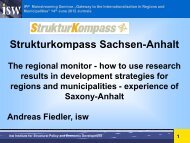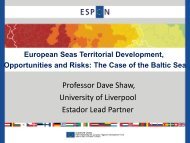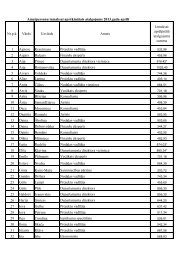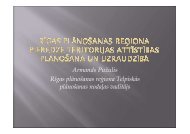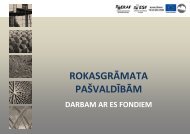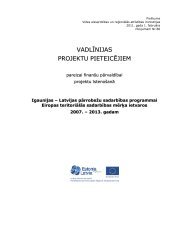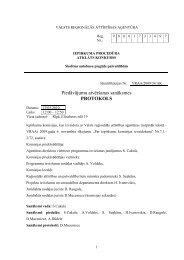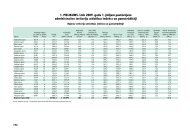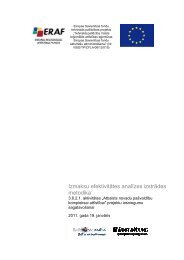Benchmark Study 1
Benchmark Study 1
Benchmark Study 1
Create successful ePaper yourself
Turn your PDF publications into a flip-book with our unique Google optimized e-Paper software.
IPP BENCHMARK REPORT<br />
V. 1.0<br />
the Region has to offer in terms of tourism. The upper and middle sections of the River Tisza are<br />
popular with lovers of water sports. Rivers are key components of eco-tourism, as fishing, water sports<br />
and equestrian tourism attract many nature lovers to the region. Lake Tisza is famous for its unique<br />
natural beauty. In the interest of the further development of hunting great emphasis must be placed on<br />
the preservation, in terms of both quality and quantity, of the game stock which is of excellent quality.<br />
Ecclesiastical heritage and related monuments, highlights and events also represent an important<br />
appeal to tourists, mainly those from the neighbouring regions. Further assets from the point of view of<br />
tourism include the relics of traditional lifestyle and farming, folk traditions (Jászság, Nagykunság,<br />
Hortobágy, Hajdúság, Szatmár and Bereg), folk crafts as well as stately homes and mansions, most still<br />
vacant and unutilised.<br />
Event tourism also has long-standing traditions. Events are, for the most part, cultural events (e.g.<br />
folkdance festivals and theatre festivals with the participation of national theatre companies), events that<br />
are either evocative of local traditions or offer culinary delights (e.g. equestrian days, goulash festival,<br />
shepherds’ days, etc.) and events of local or regional importance. Currently, the number of<br />
internationally famous events (such as the Debrecen Flower Show, the Goulash Festival in Szolnok,<br />
Summer in Jászberény and Fruit Show in Nyíregyháza, etc.) is low. It is mainly county towns that host<br />
fairs, exhibitions and conferences; currently, only Debrecen has the necessary facilities for events<br />
involving large contingents of guests or visitors; the other two county towns and Jászberény and<br />
Hajdúszoboszló can only host events with fewer attendees or visitors.<br />
The volume of tourism in the Észak-Alföld Region can be characterised by a specific duality, which is<br />
attributable, fundamentally, to the significant territorial imbalance in tourism. Both capacity and<br />
frequency of visits are concentrated in places with special appeal (concentration is even stronger in the<br />
case of foreign visitors), which have the necessary infrastructure in terms of both accommodation and<br />
other services (the concentration of guest sights is the highest in this region). Seasonality is a further<br />
problem that faces the region. Despite the decline experienced over the past few years, the Észak-<br />
Alföld Region has managed to retain its position in the midleague among the regions in Hungary. In<br />
2009, number of guests at private accomodation was 120.158 and number of guest nights was<br />
418.458. The same figures in terms of commercial accommodation were 104.589 guests and 326.712<br />
guest nights.<br />
The institutional system of tourism in the region is diversified. It includes local governmental alliances<br />
operating side by side, various micro-regional and county associations, those involved with regional<br />
level tourism-related responsibilities and NGOs. Tourinform Offices (there are 23 of them) are of great<br />
importance. In addition to the above organisations, there are 31 travel agencies and tour operators in<br />
the Region. Magyar Turizmus Zrt. (Hungarian Tourism Private Limited Company), Észak-alföldi<br />
Regionális Marketingigazgatóság (Észak-Alföld Regional Marketing Directorate) and Tisza-tavi<br />
Page 36<br />
www.i-p-p.eu



